Apple iPhone 3GS Review
Apple iPhone 3GS Review
Is the 3GS the best iPhone yet?
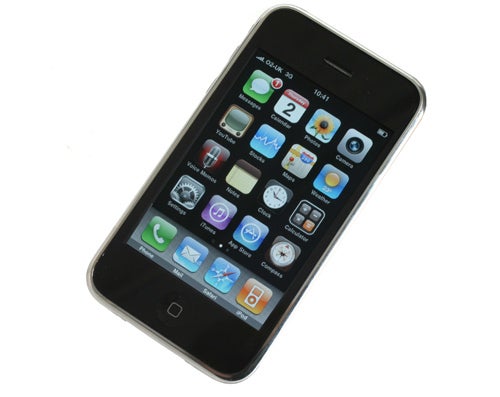
Verdict
Introduction
No matter what I write in this review, there are people out there who will instantly accuse me and the TR team in general of being Apple fan boys, so I may as well throw the cat among the pigeons straight away. Put simply, the original iPhone changed the face of mobile devices, and proved without a doubt that a great user interface is far more important than a long feature list.
For years iPhone haters have always been keen to point out all the features that are missing from the device and how their Windows Mobile/Nokia/other handset is better because it supports a host of features that the iPhone doesn’t. Apple addressed some of these issues with the iPhone 3G that launched last year, adding (unsurprisingly) 3G data support along with GPS functionality.
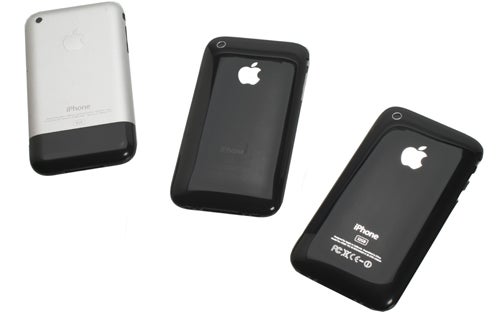
But, even the iPhone 3G was open to very vocal criticism – no MMS, no copy and paste, no video recording, no A2DP Bluetooth support… The whinging went on, and once again everyone at TrustedReviews was accused of being biased towards Apple, when in reality we believed, and still do believe, that the user experience afforded by the iPhone far outweighed its lack of certain features.

Did I ever sit there with my head in my hands lamenting the lack of copy and paste on my iPhone? No, not really. Did I ever wish that I could wirelessly stream music to a pair of Bluetooth headphones? Nope – I’d far rather plug my Shure E500s in and make the most of my music. Did I ever wish that I could whip my iPhone out of my pocket and video some mundane occurrence in the hope that I might get it shown on BBC News? Absolutely, positively never!

However, if a list of features is really that important to you and you can’t see beyond it, the new 3GS may offer just enough to convince you of the iPhone’s merit. Although I wouldn’t necessarily call the iPhone 3GS the third generation device, there are enough tweaks and improvements over the iPhone 3G to make it appeal to some of the naysayers.

Whether there’s enough of an improvement over the 3G to make it a worthwhile upgrade for existing iPhone users is a different matter though, and one that I’ll look at in more detail later in this review. For now though, let’s see what new features the iPhone 3GS brings to the party.
Performance – The Need For Speed
On the surface, the iPhone 3GS doesn’t look much different to the older 3G, especially if the latter is running the latest 3.0 version of the firmware (more about that later). But one of the key changes isn’t a new feature, it’s the 3GS’ ability to do exactly what the old iPhone can do, just faster.
Apple is still pretty cagey when it comes to the exact hardware specification in the iPhone, but the 3GS has seen an increase in speed for the main processor, along with a new graphics chip, while there’s also more memory on tap. The result – according to Apple at least – is that the 3GS is up to twice as fast as the 3G, which is a pretty bold claim.

In practice though, I can assure you that Apple is not exaggerating – the 3GS is significantly quicker than the 3G in pretty much every area. My guess would be that the new graphics chip plays the biggest role in the 3GS’ ode to speed. There’s no doubt that the 3GS renders graphics far, far faster than the 3G, whether that be on a web page or even in the phone’s own user interface.
Mobile Safari has always been one of the iPhone’s trump cards, but the 3GS takes it to a new level of usability, rendering graphics heavy web pages in the blink of an eye. In fact, in this respect the 3GS really does live up to Apple’s claims of it being twice as fast as the 3G. Connecting the 3GS and my iPhone 3G up to the TrustedReviews Wi-Fi network, I then opened www.trustedreviews.com on both handsets simultaneously. The 3GS simply blew the 3G away in terms of speed, with the page rendered in less than half the time.

Well, that’s what happened when I ran that test yesterday. Today things played out very differently indeed. Today I tried exactly the same page load test and the 3GS was far, far slower than the 3G. This had me very confused until I ran a data speed test and found that while my iPhone 3G was managing around 700kbps on the office Wi-Fi connection, the 3GS was reporting download speeds of between 19 and 40kbps. So clearly the problem was to do with Wi-Fi rather than the speed of page rendering.
A bit of digging around the Internet showed that I’m not the only one who’s had Wi-Fi issues with the 3GS, with most reports indicating unreliable or intermittent performance. This turned out to be the case, since when I tried the same test an hour later the 3GS once again spanked the 3G, and running the speed test again turned in a download speed of over 600kbps.
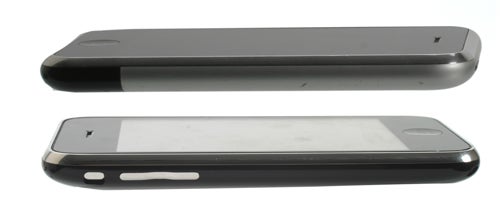
Taking Wi-Fi out of the equation though, the 3GS is consistently faster, whether you’re switching between apps, or simply opening up the settings page. On graphic heavy apps the new graphics chip will be making a difference, but also the extra memory no doubt keeps the 3GS nipping zipping along.
Another area where the 3GS has a potential speed increase over its predecessor is 3G data. The 3GS supports 7.2mbps HSDPA, which is currently the fastest cellular data standard available. However, the iPhone 3GS supporting 7.2mbps HSDPA is only part of the equation, since even if a network provider offers full 7.2mbps HSDPA, most of the time you’ll only see a fraction of that.
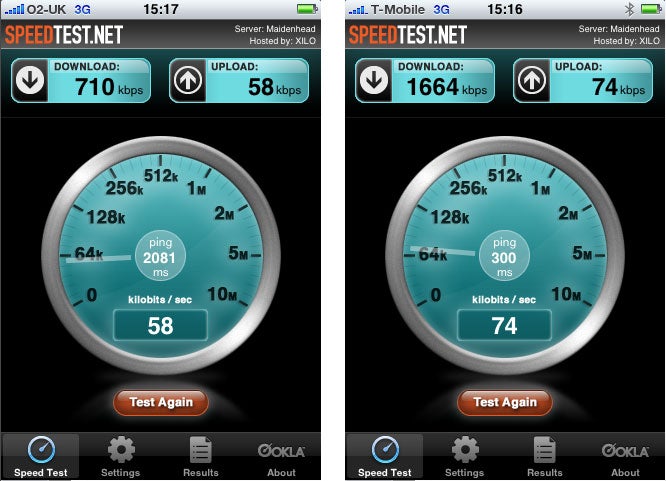 ‘
‘
The 3GS on O2 showed a download speed of less than half that of the older 3G connected to T-Mobile. Both tests were run at the same time in the same location.
Running the iPhone Speed Test again, I compared the 3GS to an iPhone 3G on the T-Mobile network instead of O2. The result was the 3GS on O2 turning in a very respectable 710kbps, while the 3G on T-Mobile managed more than double that at over 1.6mbps! So, in some respects the faster 3G capability of the iPhone 3GS is moot, since it would appear that O2’s 3G network can’t really make the most of it.
I did the same test with an iPhone 3G on O2, and its download speed was pretty much identical to the 3GS. However, once again the 3GS’ ability to render graphic heavy web pages quickly meant that it could still load, say, TrustedReviews faster than both 3G handsets, regardless of network. On the plus side, anyone who buys an iPhone 3GS should be safe in the knowledge that it will just get faster as O2 improves its 3G network.
Camera – Say Cheese
Another aspect of the iPhone that has often been open to criticism is the camera, and I can understand why. The fixed focus, 2-megapixel camera that appeared in the original iPhone was pretty disappointing back in 2007, but when the same camera was implemented in the iPhone 3G a year later, many, including myself were somewhat surprised and disappointed.
This time around Apple has decided to upgrade the camera, which is hardly a surprise given the fact that most of the touch-screen competition are sporting 8-megapixel cameras, while LG has already announced a phone with a 12-megapixel example built-in. So, does the camera in the 3GS measure up to the competition? Errr, no.
The 3GS sports a 3-megapixel camera, which may seem low by contemporary standards, but you shouldn’t get carried away with the megapixel numbers game. What you need to remember is that the sensors employed by mobile phone cameras are pretty tiny, so squeezing more pixels onto them is not necessarily going to give you better pictures. In fact, there’s every chance that the images will look worse, due to the higher chance of sensor noise.

The iPhone 3G image is horribly overexposed, with the deep yellow paintwork looking palid. The image is also very noisy, with highlights blown out.

Although the colour of the car is more accurately (though still not perfectly) captured, the whole image is underexposed, with all detail of the tree trunk in the background lost. Despite the underexposure, the highlights are still blown out.
Unfortunately the increased resolution over the iPhone 3G hasn’t really improved the overall image quality. The identical shots of the Liquid Yellow Clio R27 show that neither the 3G or 3GS does a particularly good job of capturing the bright paintwork. I’m guessing that the sensor resolution is simply not the issue with the iPhone camera, and it’s the lens that is the limiting factor.
Interestingly the 3G and 3GS seem to lie at opposite ends of the spectrum when it comes to exposure, with the former tending to overexpose images, giving them a washed out look, while the latter underexposes, thus losing detail in low light areas. Subjectively, the 3GS produces better looking photos, but they’re still by no means great, and despite the tendency to underexpose, high intensity areas are often blown out.

The camera on the 3GS also has autofocus, whereas the old camera was fixed focus. The cool thing is that you can set your focus point by simply tapping it on the screen, but again the limitations of the lens mean that despite this feature, you’re still not going to get shots much better than the camera in the old iPhone. It’s not like the lens is fast enough to experiment with depth of field effects or anything similar, so the defined focus point is somewhat moot.
Video Recording – Making Movies
The other major new addition in the camera department is the ability to record video. This is another one of those features that the iPhone haters have been harping on about since Apple launched its phone, but I never really missed video recording on my phone. Now that the iPhone does record video, I’m sure that many will still complain that it only supports 640 x 480, and of course, there’s no zoom function.
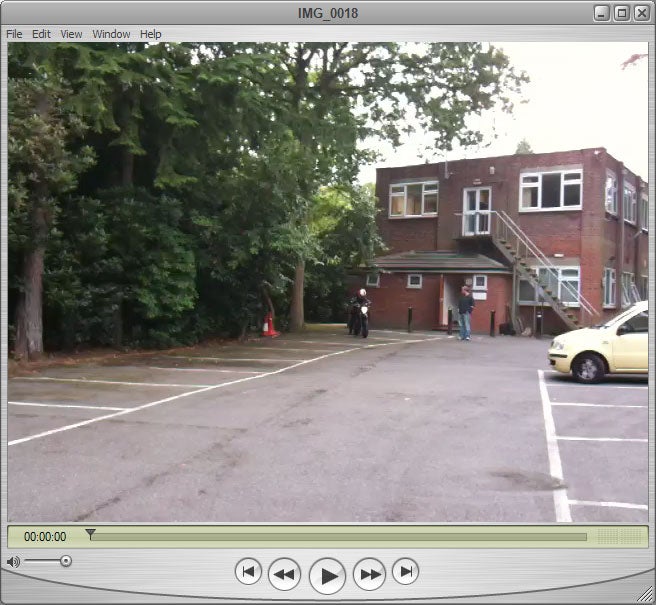
I guess with phones like the Samsung i8910 HD already able to shoot 720p high definition video, the limited, 4:3 resolution video offered by the 3GS is a bit disappointing. But then I’m not convinced that I’d want to be shooting HD video with my phone – is anyone really trying to shoot high quality video with their phone, or is it more a case of a quick video clip of your friends/children/complete strangers doing something cool/funny/ridiculous?
What is impressive is the ability to perform basic video editing on the phone. When you shoot a video you get a complete frame by frame timeline. Touching either edge of the timeline lets you trim the video down, thus eliminating any unwanted footage and leaving you with, err, the money shot, so to speak. If you hold your finger on the timeline it will expand, making it even easier to trim to the exact frame you’re after.
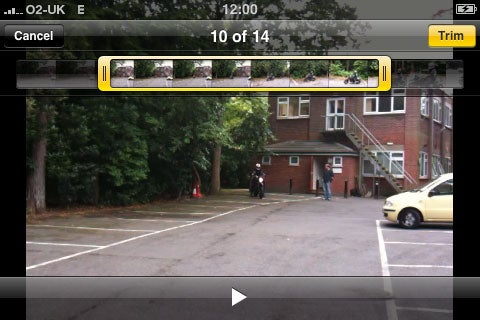
The overall quality of the captured video is nothing to write home about, but it’s perfectly acceptable from a mobile phone. Ultimately, this is the sort of video recording you used to get from an average, compact digital camera a few years back, and for the most part I imagine that the results will end up on YouTube, rather than being viewed on a high definition TV.
There’s still no facility for video calling though, made clear by the fact that there’s no user facing, second camera. Whether that’s an issue is a personal thing – I can’t say that I’ve ever felt the need to make a video call, but I do know people that do.
Fitness Support – Keep On Running
For any runners out there, the 3GS is also compatible with the Nike+ fitness system. Assuming you have a pair of Nike+ trainers and the Nike+ sensor, you can fire up the Nike+ app on the 3GS, head out the door and start pounding the pavements. Including Nike+ support in the 3GS is a smart move for a number of reasons.
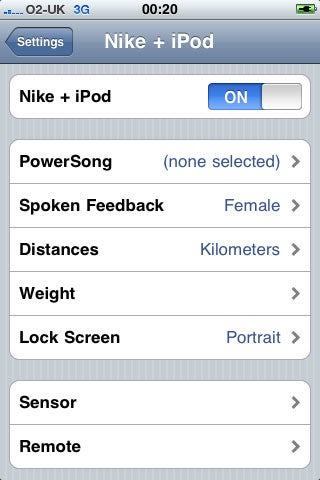
First up, if you’re the sort of person who absolutely, positively has to be contactable at all times, it means you’ll still be able to receive calls while you’re out running and listening to your workout tunes. Second, you don’t have to worry about plugging wireless receivers into a nano to make the system work, since the 3GS doesn’t need a dongle. And third, anything that makes it easier to do a little exercise is a good thing.
Unfortunately I’m more of a cyclist than a runner, so I’ve never really been bitten by the Apple/Nike collaboration. Add to that, the fact that a proper fitness system with heart rate monitoring (like the Polar FT80) will give you far more accurate data to work with.

All that said, for many, the basic data provided by the Nike+ system will offer enough encouragement to keep pushing and get fitter. Also, there’s a pretty large Nike+ community out there already, offering advice, support and those all important fitness challenges to keep you going.
Nike+ support will not be for everyone, but it is another example of the breadth of functionality that’s available on the iPhone. And since your phone is likely to be the one gizmo that you have with you at all times, the more things it can do, the more useful it is.
Navigation – Moving In The Right Direction
When the original iPhone launched, one of the best features was the seamless integration of Google Maps. When the iPhone 3G arrived with its built-in GPS receiver, Google Maps just got better, giving you the ability to find your current location and plot routes to your destination. With the 3GS the Google Maps app has got better once more with the inclusion of the digital compass.
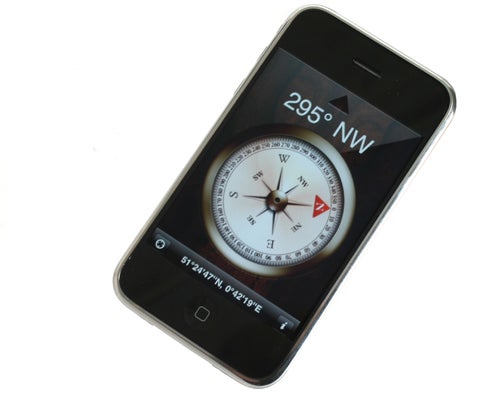
The digital compass is accessible as its own app, giving you a very pretty graphic display of, well, a compass. This can keep you amused for a while, especially if you combine it with an office swivel chair, as Hugo did this afternoon! But the real bonus is when the compass is combined with Google Maps.
When using Google Maps you tap the button to display your current position, which will be determined via the GPS receiver. Then, if you tap the button again, the compass will be activated and the map will rotate to match the direction you’re actually facing. How useful this is will depend on whether you’re the type of person who turns map books around when navigating, but nonetheless, it’s pretty cool in operation.
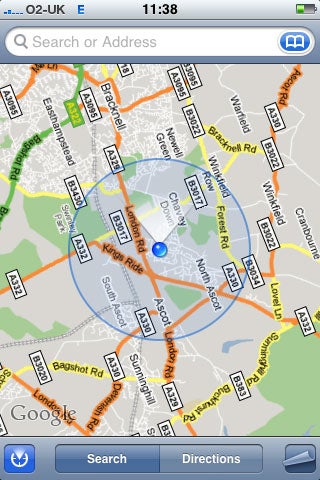
Rounding off the new hardware features is voice control. As the name suggests, you can finally control the iPhone with voice commands, whether that be dialling a phone number in your contacts list, playing a song from your music library, or even asking your iPhone what song is playing. I still find it strange that you’d have to ask your iPhone what music you put on it in the first place, but there you go.
The accuracy of the voice control in the 3GS is simply excellent. It’s pretty much up there with the best in-car systems that we’ve tested recently. Obviously there are a few pronunciation issues, when the phone reads track names, or names from your contacts list, but on the whole I found it very impressive.
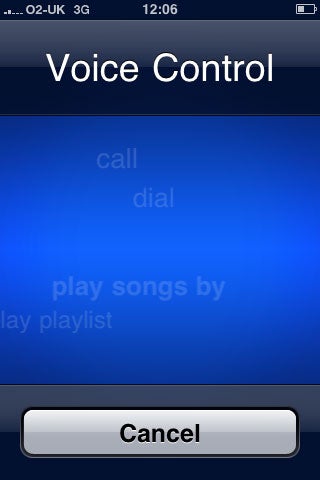
Voice control is another one of those features that you either need or you don’t. If you’re planning to use your iPhone hands-free and want to be able to dial numbers without having to touch the phone (read – while you’re driving), then voice control can be very handy. Unfortunately, this is also another one of those features that other phones have been able to do for, say, five or six years, albeit not to the same degree of accuracy as the 3GS. It’s good to see the iPhone catching up, but why wasn’t this functionality there in the first place?
MobileMe – Where’s My iPhone?
Apple’s Mobile Me cloud synching service is a pretty good way of keeping all your computers and your iPhone in step all the time, as long as you’re not already using an Exchange service or Google Sync that is. Now Apple has made the Mobile Me service that bit more compelling, especially for the paranoid iPhone user.
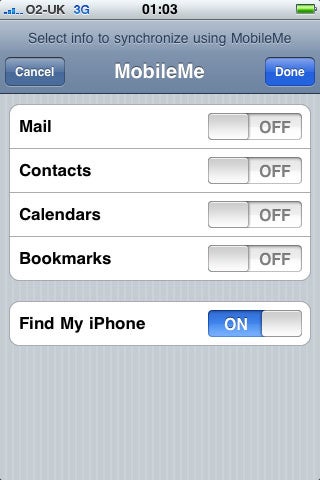
Mobile Me now sports a feature called Find My iPhone, which, as the name suggests, allows you to find your iPhone, wherever it may be. So, assuming you’ve lost your phone, you can logon to your Mobile Me account, and bring up a map showing you exactly where it is. If the map is pointing to your house, it probably means you have to look harder, but if it’s pointing to the bar that you passed out in last night, it’s time to head back to the scene of the crime.
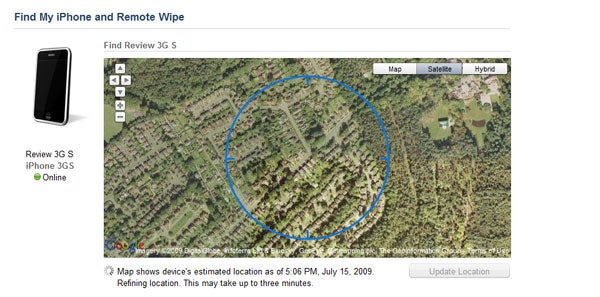
You can also send remote messages to your iPhone – so you could say something like “If you’ve found my iPhone please call xxxx xxxx and I’ll come and get it”, assuming that the person who’s found it is the honest type who wants to return it. If not, Find My iPhone has another great feature that will ensure that none of your sensitive data falls into the wrong hands.

If you’re convinced that you’re not getting your iPhone back, you can remotely erase all the data from it. OK, so you’ve still lost your phone, but at least all those compromising text messages and photos have been nuked. And best of all, when you replace your iPhone, you’ll be able to restore all your data from the backup on your computer from the last time you synched it.
Oh, there’s one important thing to remember. If you’re going to rely on Remote Erase as the last line of defence, you need to remember to have a lock code on your iPhone, otherwise the thief/finder can just disable the feature, leaving you open to a tabloid exposè.
Software – Firmware 3.0
Not all the new features in the iPhone 3GS are hardware based. Apple’s ongoing firmware updates bring new functionality to its phone on a regular basis and the latest 3.0 version – which ships on the 3GS – has a few neat tricks up its sleeve. It’s worth remembering though, that if you’ve got an iPhone 3G or even an original iPhone, you can install the latest firmware and benefit from some, if not all of the new functionality.
First up, the iPhone finally gets MMS support, so if you like being able to send your photos direct to a friend’s phone, without faffing about with email, you’ll be a happy bunny. MMS is something that I have missed since I started using an iPhone, but I’ll admit that only started using MMS after my first daughter was born, so perhaps it’s a child dependant feature.
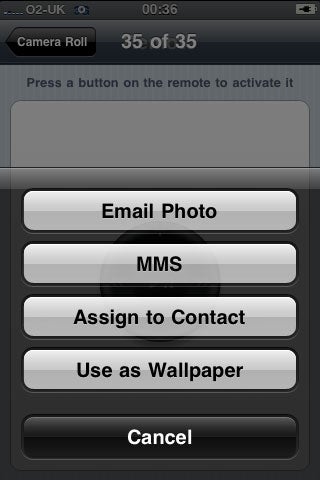
The addition of MMS gives you a little camera button when you’re looking at an SMS conversation. Pressing that button will give you the option to take a photo, or to attach a photo from your library. You can then send it to whomever you like. One thing worth remembering is that it can take a little while to send, so if you’re in an area of patchy coverage, try to stand in one place until it’s sent.
Considering that MMS has appeared as part of a simple firmware update, I can’t help but wonder why it has taken so long. Perhaps the fact that the AT&T network in the US hasn’t supported the service until now might have something to do with it.
Something else that will appease some of the iPhone critics is the implementation of copy and paste functionality. However, whereas copy and paste on some other handsets can be a fiddly affair, the iPhone’s multi-touch interface makes it an absolute breeze. That said, I still find little use for copy and paste, no matter how slick its implementation.
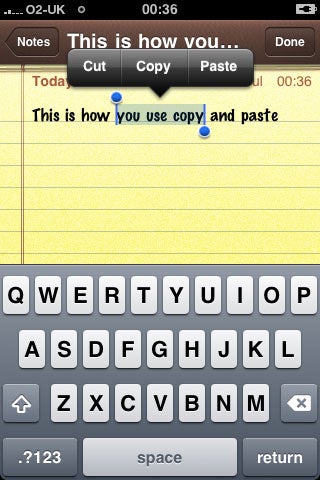
Another welcome feature courtesy of 3.0 is A2DP Bluetooth support. Whereas the iPhone only used to support a Bluetooth hands-free profile, it can now be used with stereo Bluetooth headphones. You’ll also be able to stream your music to your in-car system if it also supports A2DP.

The new global search function is particularly cool. Sliding the main home screen to the right will reveal the Search screen – pressing the Home button while already on the Home screen will have the same effect. Here you can type any search string into the box, and every instance of that string will be listed below, whether it be in your music library, notes, contacts etc.
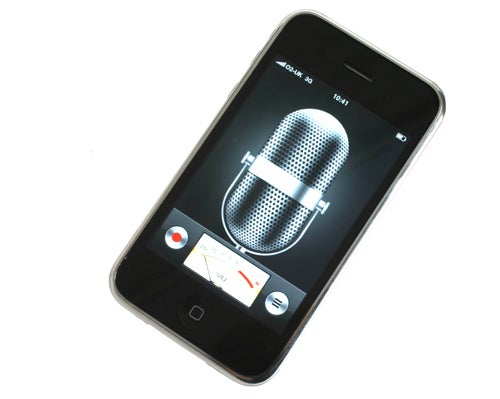
The Voice Recorder also arrived with the 3.0 firmware, allowing you to take voice notes, or perhaps record a presentation or interview. This is a particularly useful feature for someone in my line of work, but once again, something that other phones and MP3 players have been doing for years.
Conclusion – The Bottom Line
Even though the iPhone has been with us for two years now, it hasn’t lost any of its ability to impress. Despite having this time to catch up, there isn’t another phone on the market that can compete with the iPhone when it comes to usability. The multi-touch interface is as impressive today as it was when I first picked up a first generation unit.
It’s true that Android looks like it has the potential to truly compete with the iPhone in the usability stakes, but the hardware that Android has been limited to hasn’t really shown it off to its best effect, yet. That will definitely change in the near future, and I fully believe that we’re going to see some great handsets based on Google’s mobile OS soon.
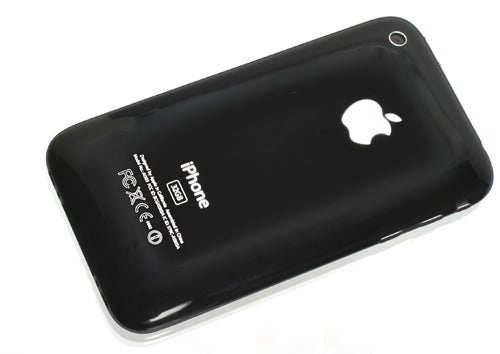
The other potential fly in the iPhone’s ointment is the Palm Pre, which, by all accounts, looks like a stunning handset. OK, so there’s no doubt that the Pre has taken a lot of, err, cues from the iPhone, but that’s not something that I’d complain about. The only real downside with the Pre is the fact that it’s exclusive to O2, just like the iPhone. So, if you’re not on O2, you’re still out of luck, unless you’re willing to unlock a Pay & Go handset.
Unlike the iPhone 3G which was available in 8GB and 16GB capacities (I wish I’d gone for the 16GB!), the 3GS comes in 16GB and 32GB flavours. The 16GB 3GS costs slightly more than the outgoing 16GB 3G model, setting you back £184.98 on a £35 per month contract, compared to £159 for the old phone. Are there enough new features in the 3GS to warrant it costing more than the 3G, probably, but there’s still no getting away from the fact that it’s an expensive phone even on an 18 month contract.
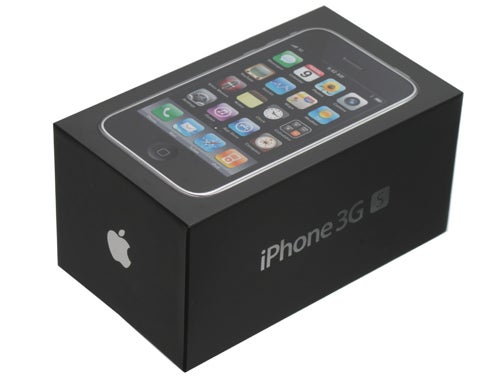
If you want a 32GB 3GS, that will set you back £274.23 on the same contract, which seems like an eye watering amount of money until you realise that a 32GB iPod touch will cost you £283. I know that you’re not taking on an 18 month contract with an iPod touch, but I imagine that most iPod touch owners also have a mobile phone with a contract.
The real question though, is whether the iPhone 3GS is worth going for, but the answer depends on your current situation. If you’ve got a first gen iPhone and you’re out of contract, there’s no doubt that it’s worth going for a 3GS. Likewise, if you’re using pretty much any other smartphone, it’s worth stumping up the cash for a 3GS – assuming you’re on O2, or at least willing to switch networks.
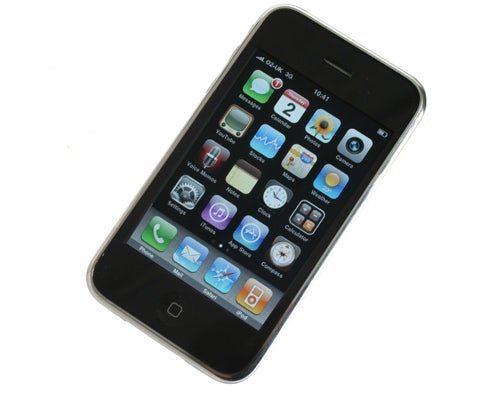
However, if you’re already an iPhone 3G user, I’m not convinced that the 3GS is enough of an update, especially once you’ve updated your phone to the 3.0 firmware. That’s not so much a criticism of the 3GS, just that the 3G is still a great phone, that has just got better with the implementation of 3.0. And if the 3GS hadn’t just launched, the iPhone 3G would probably still be the best handset out there.
Verdict
The iPhone 3GS is the fastest, most feature rich model so far, and if you don’t already have a iPhone 3G it’s well worth the money. If you do have an iPhone 3G though, it’s not quite so cut and dry. The 3GS may be faster than the 3G when it comes to rendering pages and general operation, but the O2 data network makes the faster 7.2mbps HSDPA support moot, while the inconsistent Wi-Fi performance is also a bit of a worry.
For now though, the iPhone 3GS takes the crown as the best consumer handset available, but with the imminent Palm Pre and new Android based handsets on the horizon, it will be interesting to see how long it keeps it.
How we test phones
We test every mobile phone we review thoroughly. We use industry standard tests to compare features properly and we use the phone as our main device over the review period. We’ll always tell you what we find and we never, ever, accept money to review a product.
Trusted Score
Score in detail
-
Performance 8
-
Design 10
-
Usability 10
-
Value 8
-
Features 9
General
| Height (Millimeter) | 115.5mm |
| Width (Millimeter) | 62.1mm |
| Depth (Millimeter) | 12.3mm |
| Weight (Gram) | 135g |
| Available Colours | Black |
Display
| Screen Size (inches) (Inch) | ["3.5in","in"] |
| Screen Resolution | 320x480 |
| Touchscreen | Yes |
Battery
| Talk Time (Minute) | 300m |
| Standby Time (Hour) | 300hr |
Storage
| Internal Storage (Gigabyte) | 8/16/32GB |
| Camera (Megapixel) | 3.15 Megapixel |
| Front Facing Camera (Megapixel) | No Megapixel |
| Camera Flash | No |
Connectivity
| Bluetooth | Yes |
| WiFi | Yes |
| 3G/4G | Yes |
| 3.5mm Headphone Jack | Yes |
| Charging/Computer Connection | via proprietary socket |
Processor and Internal Specs
| CPU | 600MHz ARM Cortex A8 |
Misc
| App Store | App Store |
| GPS | Yes |

